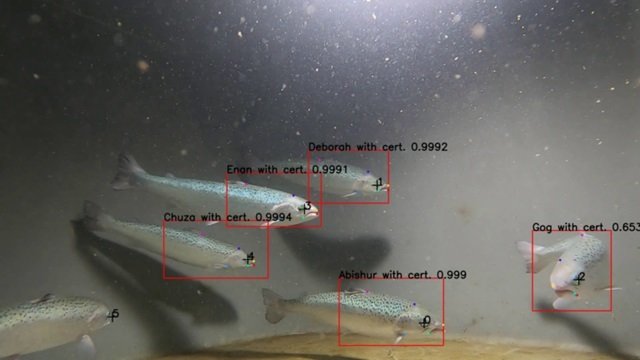Paris, France.- Using a new computer model, researchers at the Ecole Centrale de Marseille and CNRS have shown that a fish expends less energy when it swims in a school, because neighbouring fish produce a ‘suction’ effect. This work will be published on 11 May 2018 in Physical Review Letters.
Schools of fish provide a fascinating example of collective behaviour in which the group moves in a coordinated manner without the need for a leader. In the past, many computer models have shown that such collective motion can emerge from simple rules: each individual tends to align itself with its neighbours and move towards them while avoiding collisions. However until now, no research into the role of water flow between fish had ever been carried out.
To investigate this question, a group of fluid mechanics specialists at the Institut de Recherche sur les Phénomènes Hors Équilibre (CNRS/Aix-Marseille Université/Centrale Marseille) and physicists at the Laboratoire de Physique Théorique (CNRS/Université Toulouse III-Paul Sabatier)1 developed an original model that incorporated flow dynamics within a school numbering hundreds of fish. The path of each individual is governed by classic rules of attraction and alignment, as well as translation and rotation effects caused by the flow generated by the other fish.
The new model revealed a surprising effect of the interaction between the fish and the fluid surrounding them: when swimming in schools, fish expend less energy due to a ‘suction’ effect produced, on average, by all the fish. This advantageous effect of schools had already been hypothesised, although it was thought that the fish had to be positioned in a highly specific configuration to benefit from it. Here, the researchers showed that the effect is present even when the group of fish appears to be disordered.
The research team now plans to refine its model so as to incorporate other factors that affect the dynamics of schools, such as the vortices that fish produce in their wake.
Reference:
Model of collective fish behavior with hydrodynamic interactions. Audrey Filella, Francois Nadal, Clément Sire, Eva Kanso and Christophe Eloy. Physical Review Letters, May 11, 2018. https://journals.aps.org/prl/accepted/d107fY8fR0d1746e852c29a0b924e31024b80e10b
Source: CNRS
Stay Always Informed
Join our communities to instantly receive the most important news, reports, and analysis from the aquaculture industry.
Editor at the digital magazine AquaHoy. He holds a degree in Aquaculture Biology from the National University of Santa (UNS) and a Master’s degree in Science and Innovation Management from the Polytechnic University of Valencia, with postgraduate diplomas in Business Innovation and Innovation Management. He possesses extensive experience in the aquaculture and fisheries sector, having led the Fisheries Innovation Unit of the National Program for Innovation in Fisheries and Aquaculture (PNIPA). He has served as a senior consultant in technology watch, an innovation project formulator and advisor, and a lecturer at UNS. He is a member of the Peruvian College of Biologists and was recognized by the World Aquaculture Society (WAS) in 2016 for his contribution to aquaculture.




